3D Finite Elements
Introduction
The 3D Finite Elements object allows the definition of three-dimensional objects in Modalys, using a mesh, which is then converted to modal data with the help of numerical methods. The introduction of finite elements in Modalys is the work of Joël Bensoam after his brillant PHD thesis (2003).
Although the instantiation of the 'finite-element object itself is documented within the Object Reference, this section of the documentation will eventually be expanded to include the family of functions that assist in the creation of these objects.
And last but not least, finite elements are available since v.3.6 in Modalys for Max, very tightly linked to the mlys.lua controller. So we suggest that you take a look at the growing lua Modalys examples within Max. That is a very good starting point.
Abstract Modalys is a sound synthesis software developed at Ircam for research and musical applications. This software allows one to build virtual instruments based on physical models to obtain the most entire range of expressive variations in the instrument in response to intuitive controls. An instrument, as a complex structure, is described by the mechanical/acoustical interaction of its components (strings, tubes, resonators, soundboard,...). Some new research have been done recently to extend the sound prediction to three- dimensional objects with the help of numerical methods. In particular, theoretical and nu- merical treatment of the unilateral and frictionless dynamic contact between two arbitrary elastic bodies was studied and highlighted by simulations implemented in Modalys. This manual presents the new functions dedicated to finite element objects.
(compute-modes)
Description
This function calculate the mode of vibration of a finite element object. Mind the fact that each time a finite element object is defined, modes must be calculated in order to process a sound synthesis. This implies that the creation of a finite element object must be followed by the function compute-modes. It is not the case with other objects where this computation is implicitly done by Modalys.
Syntax
(compute-modes my-finite-element-object)
Parameters
my-finite-element-object The modes of vibration will be computed for this object.
Example
Read a file (for example diapason.mesh) in order to assign a mesh to a finite element object. Give the desired parameters (see the function make-object 'finite-element. . . ) and visualize it:
(define diapason-mesh (make-mesh 'read-from-file \"diapason.mesh\"))
(define diapason-fem ( make-object 'finite-element (mesh diapason-mesh)
(modes 30)
(density 7700)
(young 2e11)
(poisson .3)
(freq-loss 0.1)
(const-loss 0.5)))
(view 'object diapason-fem)

Compute the modes of vibration and visualize one of them (compute-modes diapason-fem) (view 'mode diapason-fem 18 20 5)

In the medit application right click to obtain the main-menu and choose 'Play sequence' in the 'animation' sub-menu. Use also the 'm' key.
See also
view 'mode, make-object 'finite-element
(duplicate 'homothety)
Description
Constructs a mesh by duplication using an homothety. Points are extruded into lines, lines into quadrilaterals and quadrilaterals into hexahedras.
Syntax
(duplicate 'homothety mesh rep. homothety-point homothety-amplitude)
Parameters
mesh The mesh to be extruded by homothety. This mesh could be constituted by points, lines or quadrilaterals. rep. Number of extrusion. homothety-point Center homothety coordinates. homothety-amplitude Amplitude of the homthety
Example
Duplicate a quadrilateral into hexahedras by homothety
Define a mesh named my-mesh which contains a single quadrilateral (see duplicate 'translation for details) and visualize it:
(define my-mesh ( make-mesh 'single-point (vector 0 0 0)))
(duplicate 'translation my-mesh 1 (vector 1 0 0))
(duplicate 'translation my-mesh 1 (vector 0 0 0.5))
(view 'mesh my-mesh)
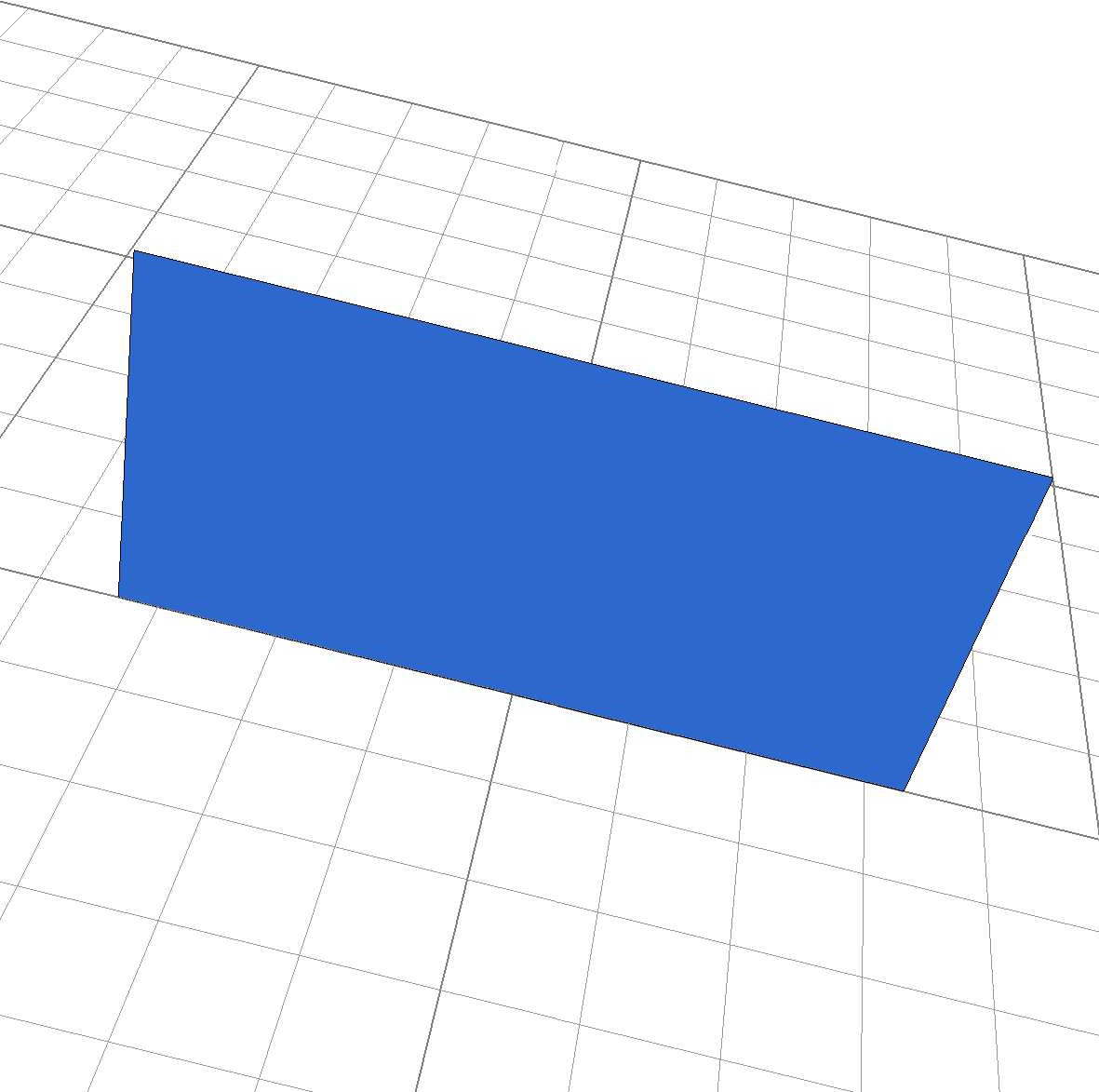
Duplicate the quadrilateral into hexahedras by an homothety (duplicate 'homothety my-mesh 2 (vector 0.5 -1 0) 1.5 ) The mesh my-mesh contains now 2 hexahedras obtained by an homothety of center (x=0.5, y=1, z=0) with an amplitude 1.5. To see the result with the homothety center, define a mesh which contains the homothety point and add it to the previous mesh (define center ( make-mesh 'single-point (vector 0.5 -1 0))) (define my-mesh (make-mesh 'add (list my-mesh center))) (view 'mesh my-mesh) In the medit application use keys 'P' and 'g'.
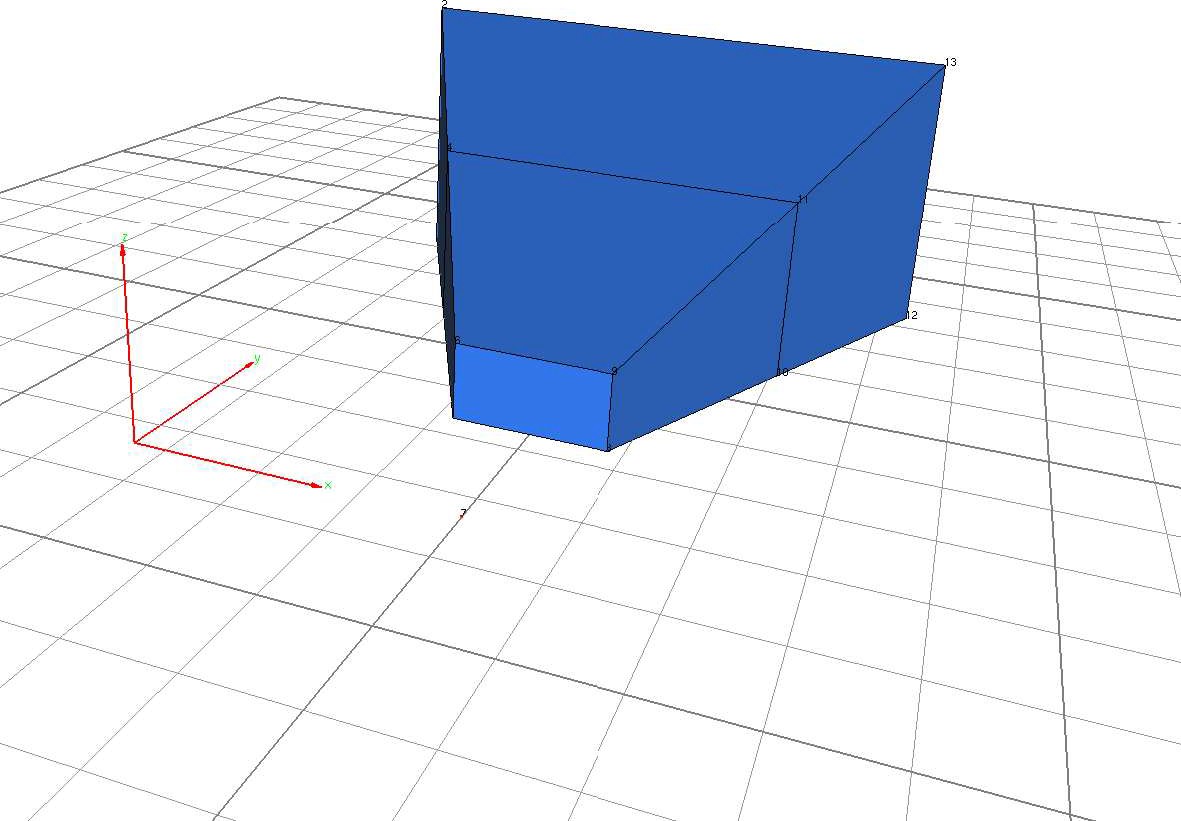
See also
transform 'homothety, make-mesh, view.
(duplicate 'reflection)
Description
Constructs a mesh by duplication using a reflection. Points are extruded into lines, lines into quadrilaterals and quadrilaterals into hexahedras.
Syntax
(duplicate 'reflection mesh normal invariant-point)
Parameters
mesh The mesh to be extruded by reflection. This mesh could consist of points, lines or quadrilaterals. normal The vector normal to the symetry plane. invariant-point Any point in the symetry plane.
Example
Duplicate a point into a line by reflection with the plane z = 0
;;;Define a point
(define my-mesh ( make-mesh 'single-point (vector 0 0 1)))
;;;Duplicate the point into a line by reflection
(duplicate 'reflection my-mesh (vector 0 0 1) (vector 0 0 0))
;;;The mesh my-mesh is now line of length 2 meters.
;;;To visualize the result with the symetry plane,
;;;construct a quadrilateral in the plane *z* = 0 and
;;;add it to the mesh line (see **duplicate 'translation** for details)
(define plane ( make-mesh 'single-point (vector -1 -1 0)))
(duplicate 'translation plane 1 (vector 2 0 0))
(duplicate 'translation plane 1 (vector 0 2 0))
(define my-mesh (make-mesh 'add (list my-mesh plane)))
(view 'mesh my-mesh)

See also
transform 'reflection, make-mesh, view.
(duplicate 'rotation. . . )
Description
Constructs a mesh by duplication using a rotation. Points are extruded into lines, lines into quadri- laterals and quadrilaterals into hexahedras.
Syntax
(Duplicate 'rotation mesh rep. rotation-axis orig angle)
Parameters
mesh The mesh to be extruded by rotation. This mesh could be made of by points, lines or quadrilaterals. rep. Number of extrusion. rotation-axis Axis of rotation. For instance the z-axis can be given by the vector (vector 0 0 1). orig Origin of the rotation. The origin (x=0, y=0, z=0) is specified by (vector 0 0 0). angle Angle of rotation in degrees.
Examples
Duplicate a point into lines by rotation
Define a mesh named my-mesh which contain a single point giving its coordinates:
(define my-mesh ( make-mesh 'single-point (vector 0.1 0 0)))
;;;Here the coordinates of the point are (x=0.1, y=0, z=0).
;;; Duplicate the point into lines:
(duplicate 'rotation my-mesh 5 (vector 0 1 0) (vector 0 0 0) 30)
;;;The mesh my-mesh is now an arc which contains 5 lines generated
;;;by rotation of angle 30 degrees around the y-axis.
;;;Visualize the mesh:
(view 'mesh my-mesh)
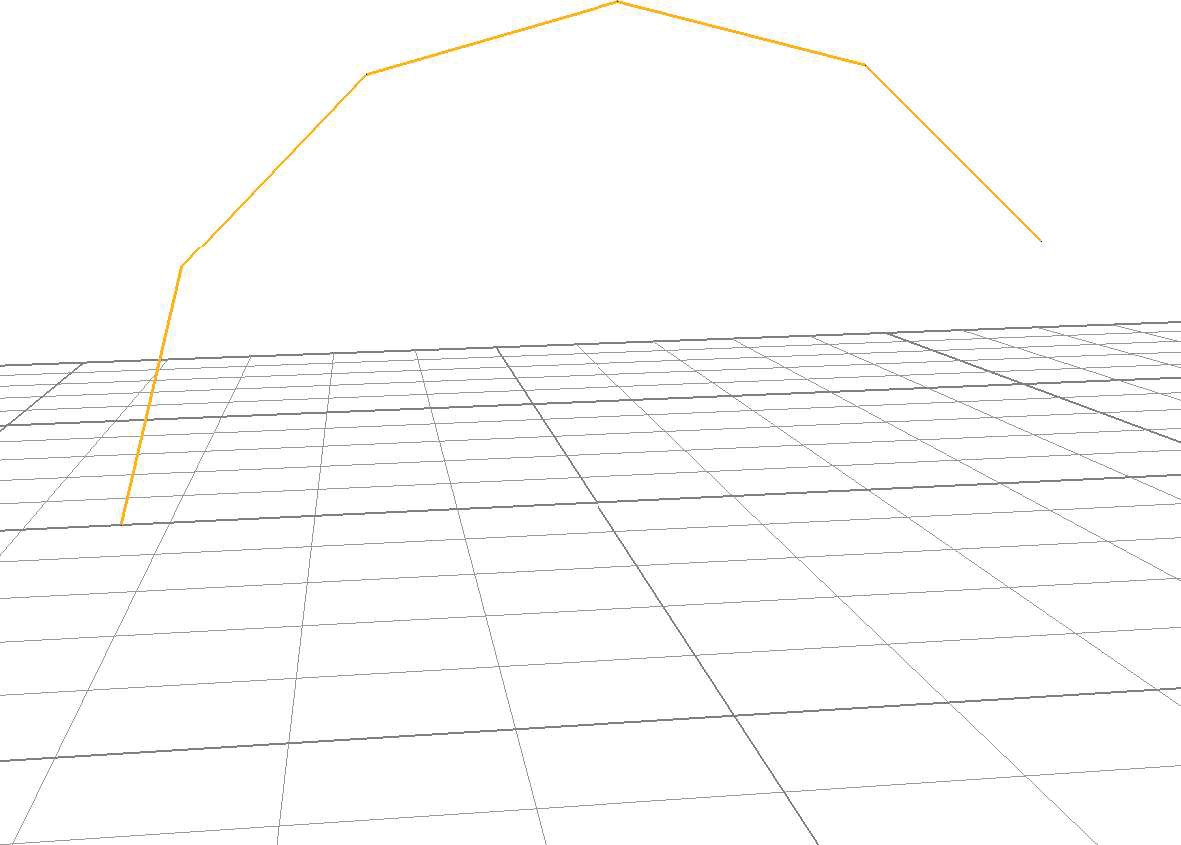
Duplicate a line into quadrilaterals
Define a line by translation of a point (see duplicate 'translation. . . ). (define my-mesh ( make-mesh 'single-point (vector 0 0.1 0))) (duplicate 'translation my-mesh 1 (vector 0 0.O5 0)) (view 'mesh my-mesh)
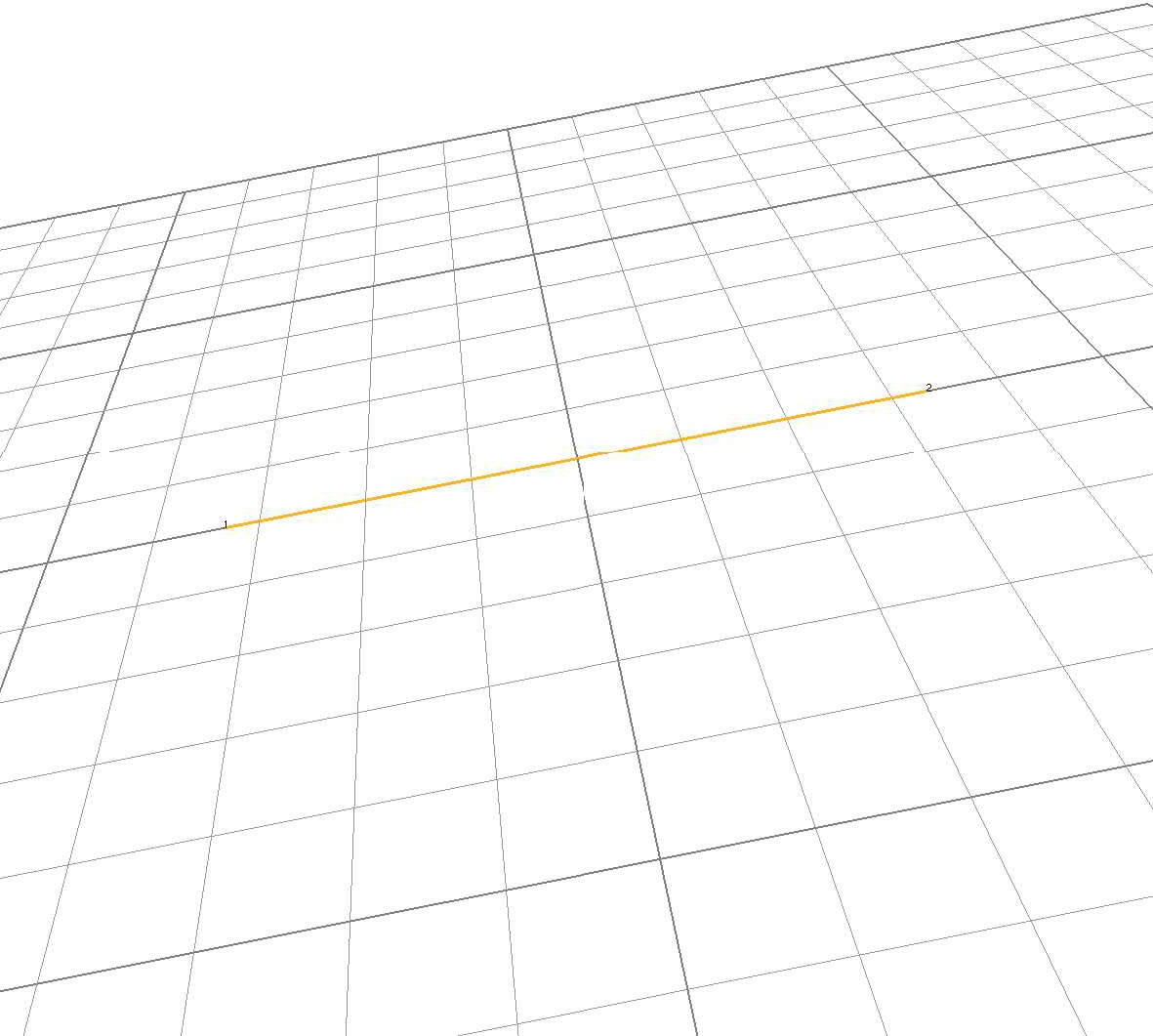
Duplicate this line into quadrilaterals (duplicate 'rotation my-mesh 7 (vector 1 0 0) (vector 0 0 0) 10) (view 'mesh my-mesh) The mesh my-mesh is now a surface which contains 7 quadrilaterals generated by rotation of angle 10 degrees around the x-axis.

Duplicate quadrilaterals into hexahedras
Using the quadrilaterals from the previous example generate hexahedras by rotation (define my-mesh ( make-mesh 'single-point (vector 0 0.1 0))) (duplicate 'translation my-mesh 1 (vector 0 0.05 0)) (duplicate 'rotation my-mesh 7 (vector 1 0 0) (vector 0 0 0) 10) (duplicate 'rotation my-mesh 6 (vector 0 0 1) (vector 0 0 0) 15) (view 'mesh my-mesh)
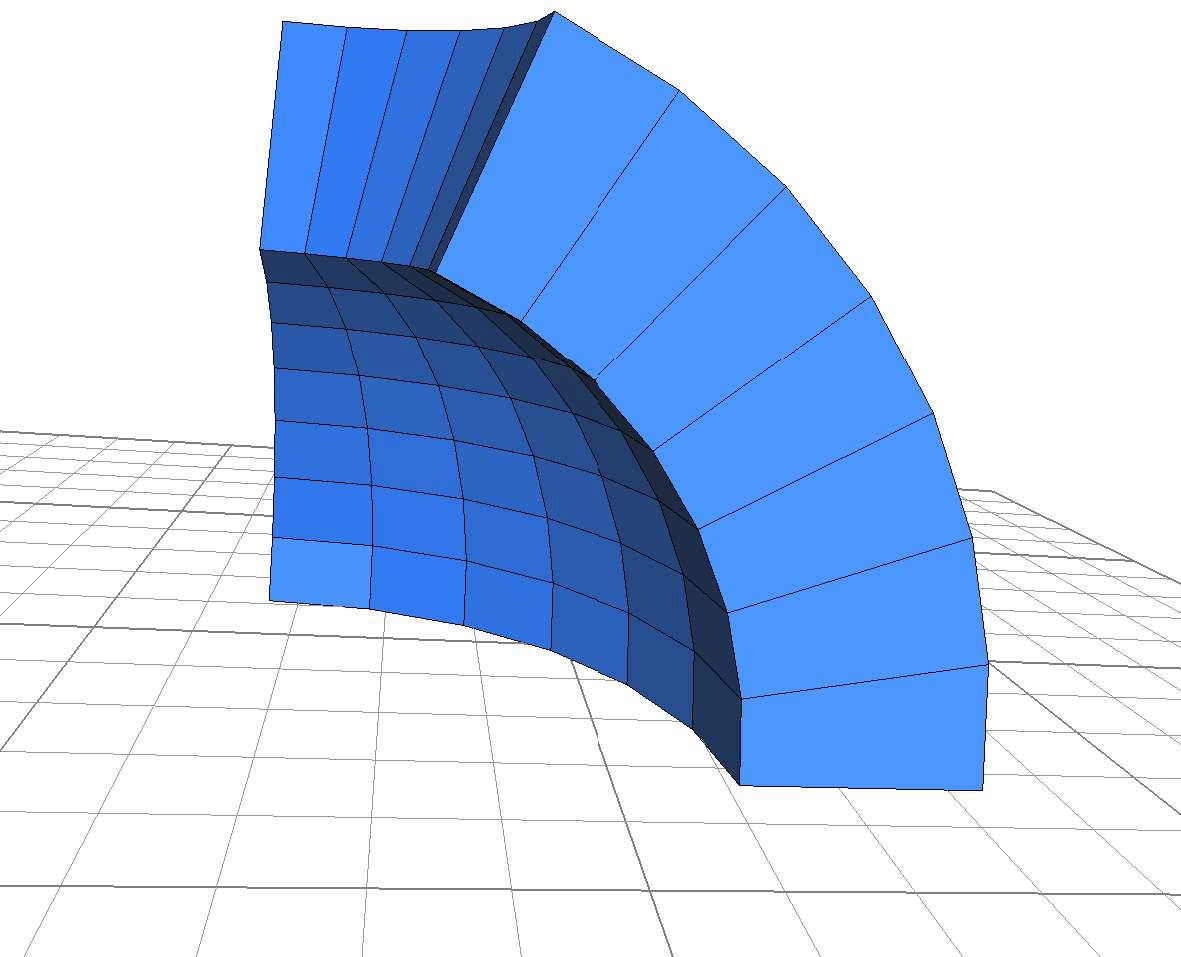
The mesh my-mesh is now a volume which contains 42 hexahedras generated by rotation of angle 15 degrees around the z-axis.
See also
duplicate 'translation, make-mesh, transform, view.
(duplicate 'translation. . . )
Description
Constructs a mesh by duplication using a translation. Points are extruded into lines, lines into quadrilaterals and quadrilaterals into hexahedras.
Syntax
(Duplicate 'rotation mesh rep. translation-vector)
Parameters
mesh The mesh to be extruded by translation. This mesh could be conatin points, lines or quadrilaterals. rep. Number of extrusion. translation-vector vector of translation. For instance translation in the z-direction of length O.1 meter is given by the vector (vector 0 0 0.1).
Examples
Duplicate a point into lines by translation
Define a mesh named my-mesh which contain a single point giving its coordinates:
(define my-mesh (make-mesh 'single-point (vector 0.1 0 0)))
;;; Here the coordinates of the point are (x=0.1, y=0, z=0).
;;;Duplicate the point into lines:
(duplicate 'translation my-mesh 5 (vector 0 0.1 0))
;;;The mesh my-mesh is now a line which contains 5 segments of
;;;length 0.1 meter generated by translation along the y-axis.
;;;Visualize the mesh:
(view 'mesh my-mesh)

Duplicate the previous line into quadrilaterals
(duplicate 'translation my-mesh 2 (vector 0 0 0.2))
(view 'mesh my-mesh)
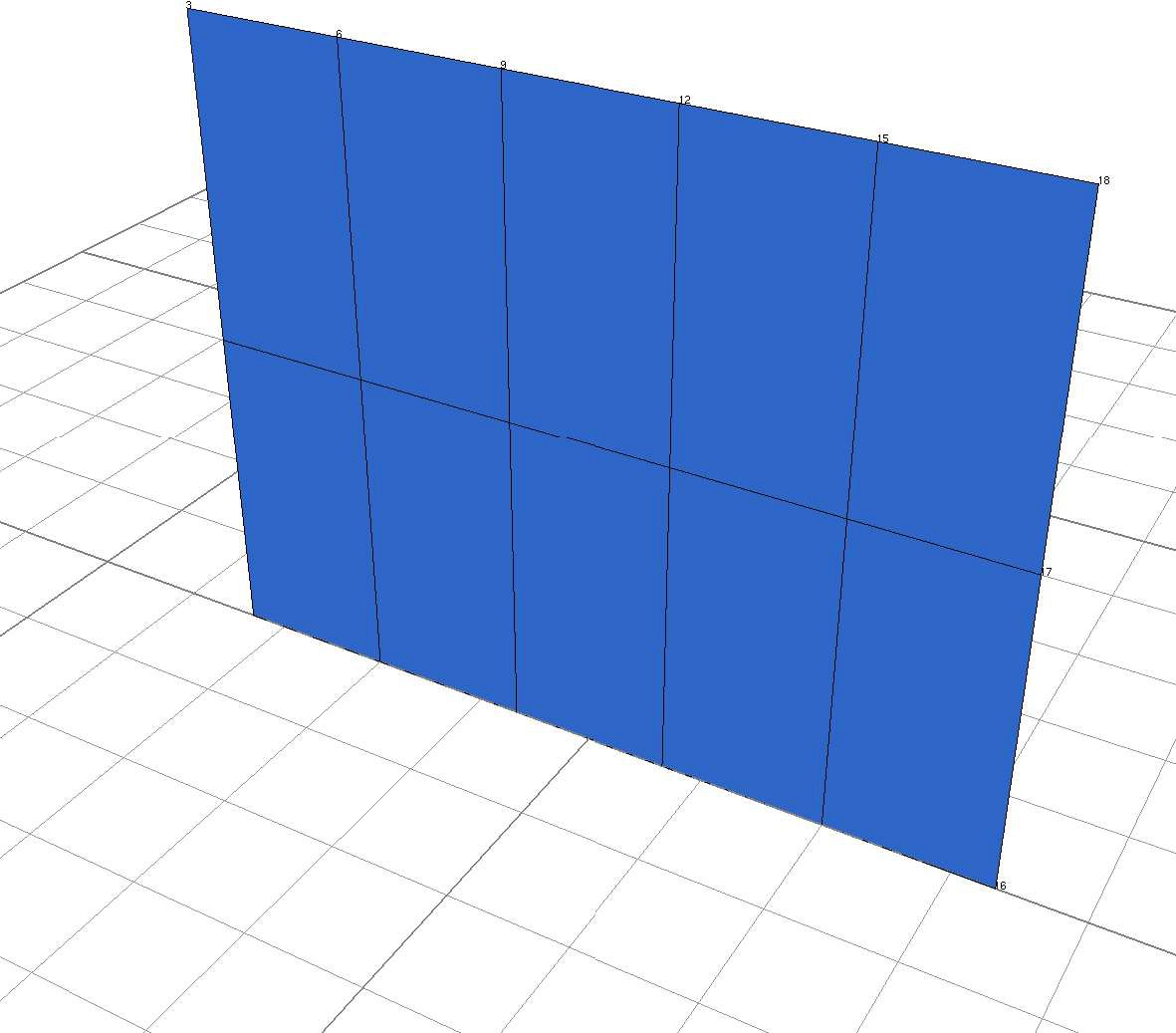
Duplicate the previous quadrilaterals into hexahedras
Take the quadrilaterals from the previous example and generate hexahedras by translation (duplicate 'translation my-mesh 6 (vector -0.05 0 0)) (view 'mesh my-mesh)
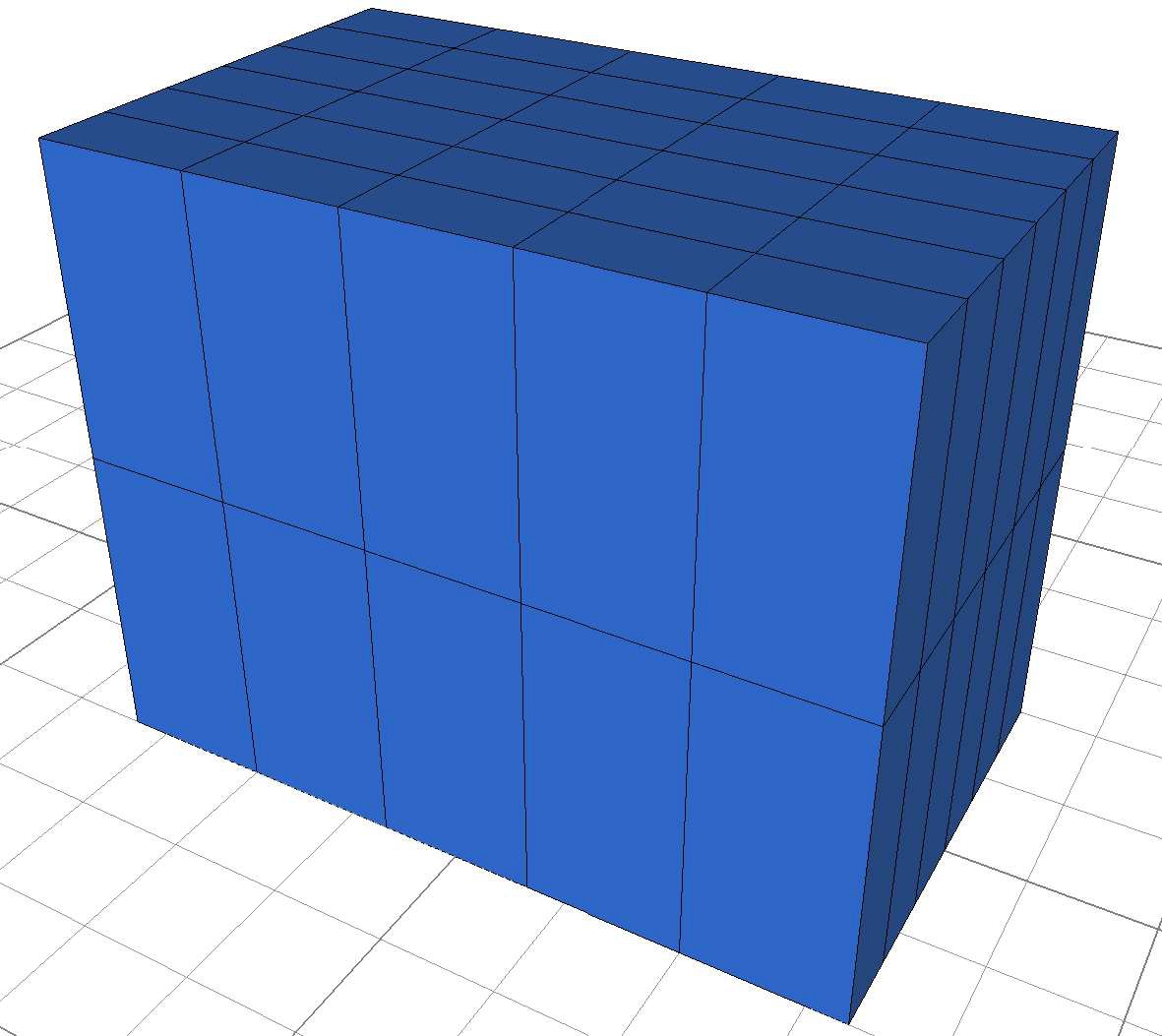
The mesh my-mesh is now a volume which contains 60 hexahedras generated by translation of the previous surface in the x-direction.
See also
duplicate 'rotation, make-mesh, transform, view.
(make-mesh 'add)
Description
Add two or several meshes.
Syntax
(make-mesh 'add list-of-meshes)
Parameters
list-of-meshes The meshes to be added together.
Example
(define sum-mesh (make-mesh 'add (list mesh1 mesh2 mesh3)))
(view 'mesh sum-mesh)
See also
duplicate 'reflection
(make-mesh 'copy)
Description
Copy a mesh
Syntax
(make-mesh 'copy mesh)
Parameters
mesh The mesh to be copied.
Example
(define my-mesh2 (make-mesh 'copy my-mesh1))
See also
fem-example
(make-mesh 'read-from-file. . . )
Description Syntax
(make-mesh 'read-from-file filename)
Parameters
filename Name of mesh data file in quotes, i.e."my-mesh". The mesh file must conform to the INRIA mesh format to be able to visualize it with Modalys.
Discussion
For the time being, Modalys is able to deal with only one type of finite element: hexahedra. To create an object with an external mesh file, you must eventually end with mesh containing only hexahedras. In the future, extensions will be made to use other types of finite element.
Example
(define my-mesh ( make-mesh 'read-from-file \"diapason.mesh\"))
(view 'mesh my-mesh)

See also
view, make-mesh, medit.
See also the GTS GNU project located at http://gts.sourceforge.net/samples.html.
(make-mesh 'restrict-edge)
Take an edge (or several edges) from a mesh to make a new mesh. This function is helpful to extract a sub mesh from an original mesh. The result is an edge (or a list of edges).
Description Syntax
(make-mesh 'restrict-edge mesh edges)
Parameters
mesh The original mesh from which a sub mesh is extracted. edge(s) The edges to be extrated given by a vector of number of nodes
Example
(define sub-mesh (make-mesh 'restricted-edge (vector 1 2 3 4 1)))
See also
For details see make-mesh 'restricted-point
(make-mesh 'restrict-plane)
Description
Take all the quadrilaterals that belong in a plane from a mesh. This function is helpful to extract a sub mesh from an original 3D mesh. The result is a mesh of quadrilaterals.
Syntax
(make-mesh 'restrict-plane mesh normal invariant-point )
Parameters
mesh The original mesh from which a sub mesh is extracted. normal The vector normal to the plane. invariant-point Any point in the plane.
Example
(define sub-mesh (make-mesh 'restrict-plane my-mesh (vector 1 0 0) (vector 0 0 0)))
See also
For details see make-mesh 'restrict-point, make-mesh 'finite-element.
(make-mesh 'restrict-point)
Description
Take a point (or several points) from a mesh to make a new mesh. This function is helpful to extract a sub mesh from an original mesh.
Syntax
(make-mesh 'restrict-point mesh point(s))
Parameters
mesh The mesh from which the point (or list of point) is (are) extracted. point(s) The point (or a list of point) given by its (their) number(s) in the mesh (see wiew 'mesh to visualize the numbering).
Example
Build your own mesh using the mesh tools: duplicate. . . , add, make-mesh. . . ) or simply read a file (for example diapason.mesh) and visualize it
(define diapason (make-mesh 'read-from-file \"diapason.mesh\"))
(view 'mesh diapason)

Extract a point (define point3 (make-mesh 'restrict-point diapason 3)) or a list of point (define points (make-mesh 'restrict-point diapason (vector 1 2 3))) to define two finite element objects blocked by different ways (define fem1 (make-object 'finite-element (mesh diapason) (block point3))) (define fem2 (make-object 'finite-element (mesh diapason) (block points))) Visualize the objects (view 'object fem1) (view 'object fem2) Use the key 'c' and 'g' in the medit application to see the choosen boundaries.
See also
make-mesh, duplicate, add, .
(make-mesh 'restrict-quadrilateral)
Take an quadrilateral from a mesh to make a new mesh. This function is helpful to extract a sub mesh from an original mesh. The result is a quadrilateral.
Description Syntax
(make-mesh 'restrict-quadrilateral mesh quadrilateral)
Parameters
mesh The original mesh from which a sub mesh is extracted. quadrilateral(s) The quadrilateral to be extrated given by a vector of its nodes
Example
(define sub-mesh (make-mesh 'restricted-quadrilateral (vector 1 2 3 4)))
See also
For details see make-mesh 'restricted-point
(make-mesh 'single-point)
Description Syntax
(make-mesh 'single-point position-vector )
Parameters
position-vector This parameter gives the coordinates of a point relative to an orthogonal Cartesian coordinate system Oxyz.
Discussion
Starting from a point, a complex finite element mesh can be obtain using the duplicate, transform and add functions (see example numero).
Example
Define a mesh named my-mesh which contain a single point giving its coordinates:
(define my-mesh ( make-mesh 'single-point (vector 0.1 0 0)))
See also
duplicate, transform, add.
(make-object 'finite-element)
Description
This function is used to create a finite element object. Its sound properties depend on the geometry (mesh), on the material parameters (density, young's modulus , poisson ration, loss parameters) and on boundary conditions (the fixed part of the mesh). The dynamical behavior of this object is described by the modal theory: the number of requested modes can be specified by the user.
Syntax and default
(make-object 'finite-element** (key value))
(make-object 'finite-element (mesh my-mesh)
(block my-sub-mesh)
(modes 40)
(density 7800)
(young 2e11)
(poisson 0.3)
(freq-loss 1)
(const-loss 1))
Parameters
key Value mesh The mesh of the finite element object. This mesh can be obtained using the function make-mesh and the Modalys's mesh tools: duplicate, transform. For the time being, Modalys is able to deal with only one type of finite element: hexahedra. Thus, the user must give here a mesh which contains only hexahedras. In the future, extensions will be made to extend the types of handled finite elements (tetrahedras, beams, plates etc) block The part of the mesh to be constrained. A part (or all) of the surface of the finite element mesh (points, edges or plane) can be fixed during the sound synthesis. The dynamic behavior of an objet (and thus its sound) can be completly different depending on the definition of this fixed topology. This sub mesh can be defined using the function make-mesh 'restrict. . . . key Value modes This value determines the number of modes of vibration computed in the simu- lation of the object. As this number is increased, higher partials are added to the resultant sound. Thus, if ten modes are declared, the lowest ten frequencies pro- duced by the vibration of the object are computed (see funcnamecompute-modes). Maximum detail is obtained when the number of modes is high enough so that all frequency below the Nyquist frequency are accounted for. density Density of the material in kg/m^3^. Some typical values are
+-----------------------+-------------+-----------------+-------------+
| Oak | 720 | Brass | > 8500 |
+:======================+=============+=================+:============+
| Glass | 2300 | > Nickel | > 8800 |
+-----------------------+-------------+-----------------+-------------+
| Quartz | 2650 | Copper | > 8900 |
+-----------------------+-------------+-----------------+-------------+
| Aluminium | 2700 | > Silver | > 10500 |
+-----------------------+-------------+-----------------+-------------+
| Steel | 7700 | | |
+-----------------------+-------------+-----------------+-------------+
Example
Define a mesh named my-mesh to declare a finite element object (see make-mesh, duplicate)
(define my-mesh (make-mesh 'single-point (vector 0.1 0 0)))
(duplicate 'translation my-mesh 1 (vector .013 0 0))
(duplicate 'rotation my-mesh 10 (vector 0 1 0) (vector 0 0 0) 6 )
(duplicate 'rotation my-mesh 59 (vector 0 0.0 1) (vector 0 0 0) 6 )
(view 'mesh my-mesh)
;;;Select a part of the mesh my-mesh
(define my-sub-mesh (make-mesh 'restrict-plane my-mesh (vector 0 0 1)
(vector 0 0 0)))
(view 'mesh my-sub-mesh)
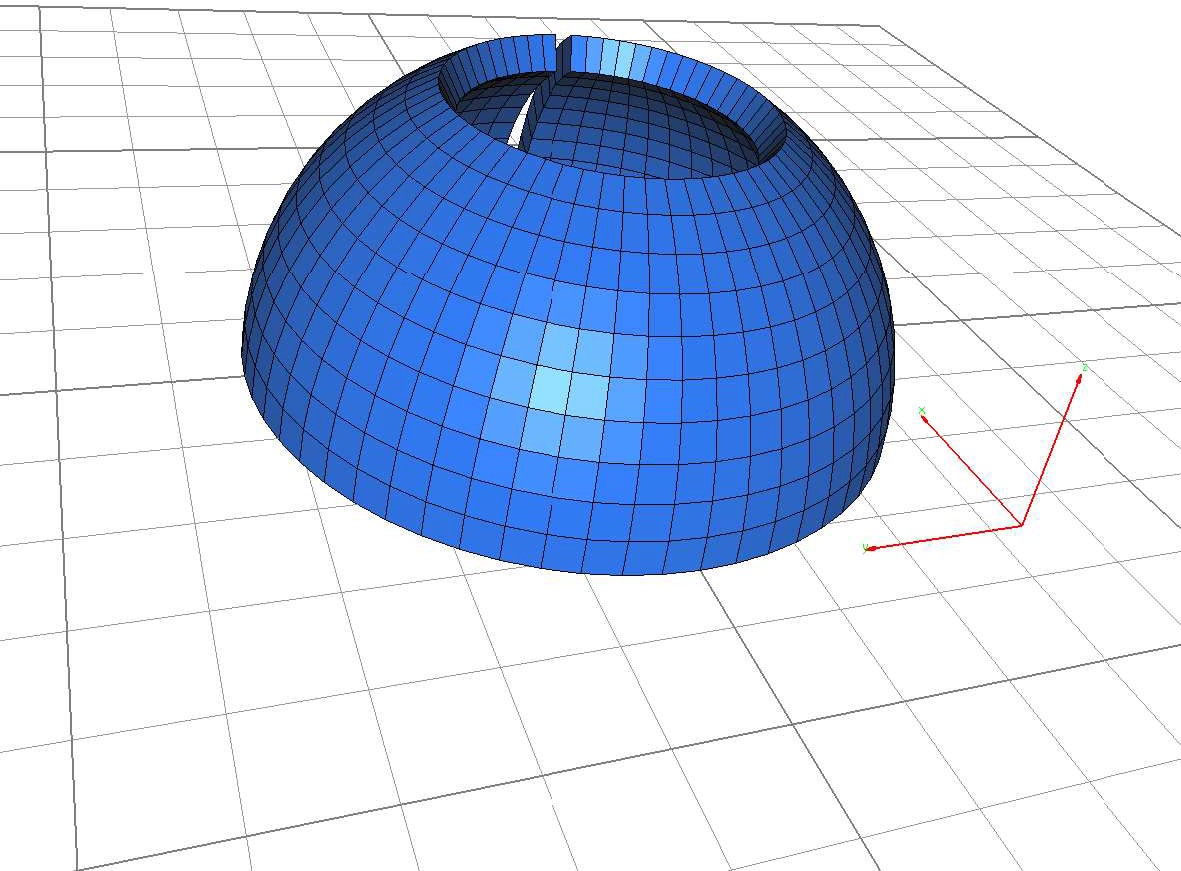
The mesh named my-sub-mesh represents the plane of equation z = 0 (the ground here) re- stricted to the mesh my-mesh
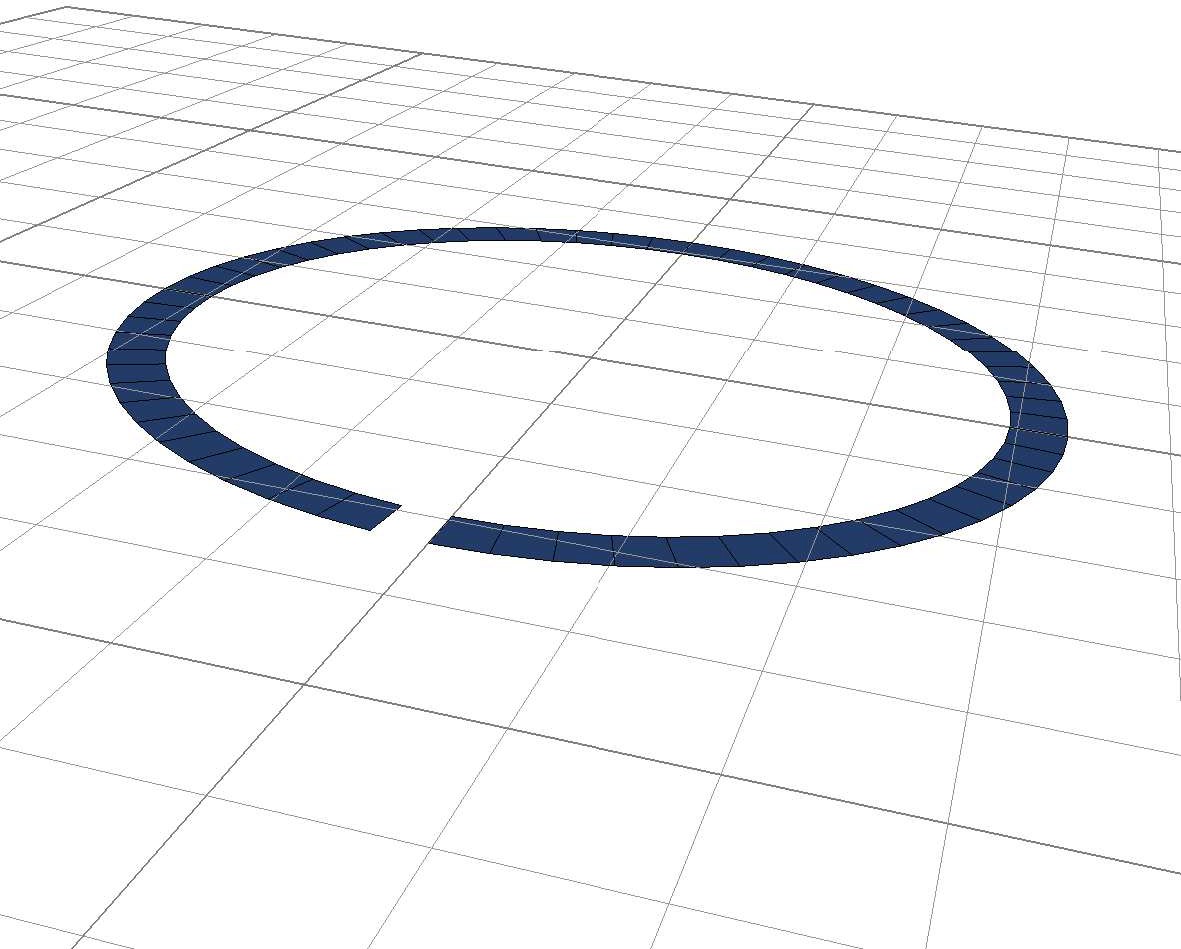
Define a finite element objet using the mesh my-mesh, block the sub mesh my-sub-mesh and ask for 30 modes (define my-fem (make-object 'finite-element (mesh my-mesh) (block my-sub-mesh) (modes 30))) (view 'object my-fem) To visualize the mesh and the sub mesh use 'c' and 'e' in the medit application (see Fig 1). Note that here the material parameters (density, young, poisson) and the losses are given by default. 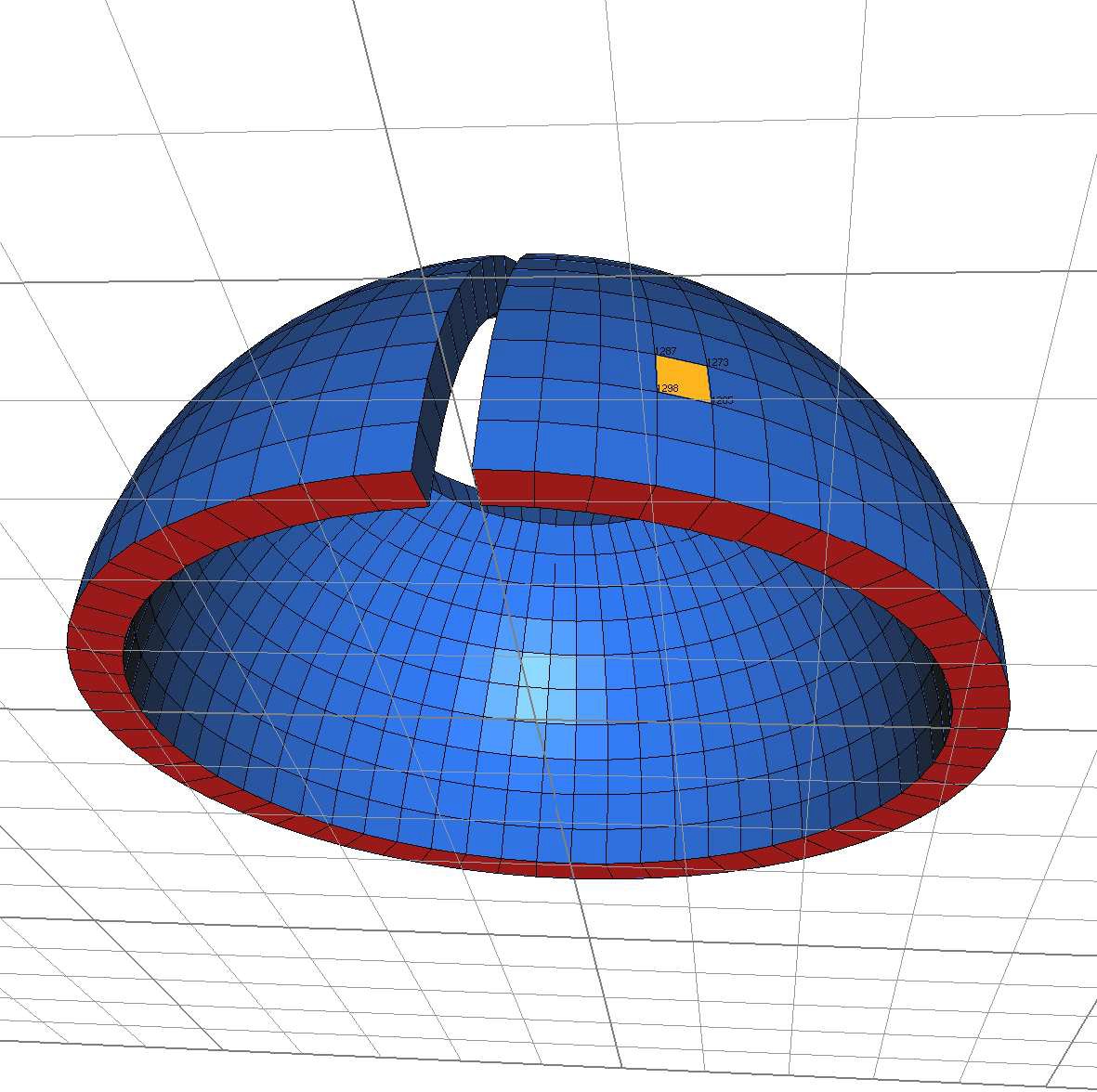 Figure 1: To obtain the number of a node, visualize the finite element object using the view 'object command and shift click the facet of interest
Figure 1: To obtain the number of a node, visualize the finite element object using the view 'object command and shift click the facet of interest
Notes
The function make-access (see Modalys Reference) can be used on a finite element object. Three direction can be declared: 'normal, 'trans0 or 'trans1. For example the instruction (define my-fem-access1( make-access my-finite-element (const 1298) 'normal )) make an access on the 1298th node of the finite element mesh in a direction normal to its surface. An access can be declared in the tangential direction of the surface giving two node numbers: (define my-fem-access1( make-access my-finite-element (const 1298 1285) 'trans0 )) An access is created at node 1298 in the tangent plane pointing through the node 1285. Using 'trans1 the access is still in the tangent plane but point in the perpendicular direction. To obtain a node number, see the figure 1). The medit application can return, in the console, the coordinates of the vertex involved in a facet and their numbers within the mesh: Picking result : Quad 731 : 1298, 1287, 1273, 1285 ref : 0 [DEFAULT_MAT]
+----------+----------+------------+-----------+------------+-----+-----+
| > vertex | 1298 : | > 0.105121 | 0.034156 | 0.023494 | ref | > 0 |
+:=========+=========:+============+===========+============+====:+=====+
| > vertex | 1287 : | > 0.102209 | 0.033210 | 0.034919 | ref | > 0 |
+----------+----------+------------+-----------+------------+-----+-----+
| > vertex | 1273 : | > 0.098178 | 0.043712 | 0.034919 | ref | > 0 |
+----------+----------+------------+-----------+------------+-----+-----+
| > vertex | 1285 : | > 0.100975 | 0.044957 | 0.023494 | ref | > 0 |
+----------+----------+------------+-----------+------------+-----+-----+
See also
make-mesh, set-physical, view 'object.
(save-mesh)
Description
Save the mesh data in a file
Syntax
(save-mesh mesh filename)
Parameters
mesh Name of the mesh to be saved filename name of destination file (in quote)
Example
Create a mesh named my-mesh using the mesh tools (see duplicate 'rotation for example) and save the mesh
(save-mesh my-mesh \"rotate.mesh\")
See also
make-mesh 'read-from-file
(set-physical)
Description
Set some material properties to a finite element object . This function can be used to avoid to redefine a finite element object. The function compute-mode must be apply in order to take into consideration the new material properties.
Syntax and default
(set-physical modalys-object (key value)) (set-physical my-object (density 7800) (young 2e11) (poisson 0.3))
Parameters
modalys-object The modalys object to be updated. key Value density Density of the material in kg/m^3^. Some typical values are
+-----------------------+-------------+-----------------+-------------+
| > Oak | 720 | Brass | > 8500 |
+:======================+=============+=================+:============+
| > Glass | 2300 | > Nickel | > 8800 |
+-----------------------+-------------+-----------------+-------------+
| > Quartz | 2650 | Copper | > 8900 |
+-----------------------+-------------+-----------------+-------------+
| > Aluminium | 2700 | > Silver | > 10500 |
+-----------------------+-------------+-----------------+-------------+
| > Steel | 7700 | | |
+-----------------------+-------------+-----------------+-------------+
See also
make-object 'finite-element
(transform 'homothety)
Description
Transform a mesh by homothety.
Syntax
(transform 'homothety mesh homothety-point homothety-amplitude)
Parameters
mesh The mesh to be transformed by homothety. homothety-point Center homothety coordinates. homothety-amplitude Amplitude of the homthety.
Example
(transform 'homothety my-mesh (vector 0.5 -1 0) 1.5 )
See also
duplicate 'homothety
(transform 'reflection)
Description
Transform a mesh by reflection.
Syntax
(transform 'reflection mesh normal invariant-point)
Parameters
mesh The mesh to be transformed by reflection. normal The vector normal to the reflection plane. invariant-point Any point in the reflection plane.
Example
(transform 'reflection my-mesh (vector 0 0 1) (vector 0 0 0))
See also
duplicate 'reflection
(transform 'rotation. . . )
Description
Transform a mesh by rotation.
Syntax
(Transform 'rotation mesh rotation-axis orig angle)
Parameters
mesh The mesh to be transformed by rotation.
rotation-axis Axis of rotation. For instance the x-axis can be given by the vector (vector 1 0 0).
orig Origin of the rotation. The origine (x=0, y=0, z=0) is specified by (vector 0 0 0).
angle Angle of rotation in degrees.
Example
(transform 'rotation my-mesh (vector 0 1 0) (vector 0 0 0) 30)
See also
transform 'translation, make-mesh, transform, view.
(transform 'translation. . . )
Description
Transform a mesh by translation.
Syntax
(Transform 'rotation mesh translation-vector)
Parameters
mesh The mesh to be transformed by translation.
translation-vector vector of translation.
For instance translation in the y-direction of length 0.1 meter is given by the vector (vector 0 0.1 0).
Example
(transform 'translation my-mesh (vector 0 0.1 0))
See also
duplicate 'rotation
(view 'mesh)
Description
Visualize a mesh. The Modalys application launch the medit application to visualize a mesh.
Syntax
(view 'mesh mesh)
Parameters
mesh Name of the mesh to be visualized
Examples
Create a mesh named my-mesh using the mesh tools (see duplicate 'rotation for example) and visualize it (view 'mesh my-mesh)
See also
view 'mode, view 'object
(view 'mode)
Description
Animate a mode of vibration.
Syntax
(view 'mode finite-element-object num-mode num-frame rep. [amp] )
Parameters
finite-element-object The finite element object for which a mode is to be visualized num-mode Number of the mode to be animated num-frame Number of frame in the movie for one oscillation rep. Number of oscillation [amp] Amplication coefficient (optional). A default is computed to fit in the window
Example
See the command
(view 'mode diapason-fem 18 20 5)
See also
compute-mode
(view 'object)
Description
Visualize an object with the choosen boundaries.
Syntax
(view 'object my-finite-element)
Parameters
my-finite-element The finite element object to be visualized.
Examples
;;; fem-example
(new)
(define side 0.002) (define r 7 ) (define s 21 )
(define h (*2.2 r side ))
(define base ( make-mesh 'single-point (vector side side 0) ))
(duplicate 'translation base 1 (vector (* -2 side) 0 0))
(duplicate 'translation base 1 (vector 0 (*-2 side) 0))
(duplicate 'homothety base 1 (vector 0 0 ( *2 side)) 1 )
(define base_inv (make-mesh 'copy base ))
(transform 'reflection base_inv (vector 0 0 1) (vector 0 0 ( *-2 side )))
(define base (make-mesh 'add (list base base_inv)))
(define diapason (make-mesh 'single-point (vector side side 0)))
(duplicate 'translation diapason 1 (vector (*-2 side) 0 0))
(duplicate 'translation diapason 1 (vector 0 (*-2 side) 0))
(duplicate 'translation diapason r (vector 0 0 (*2 side) ))
(define arc (make-mesh 'restrict-quadrilateral diapason
(vector (+ 4 (*4 r )) (+ 2 (*2 r)) (+ 1 (*2 r)) ( + 3 (*4 r)))))
(duplicate 'rotation arc 6 (vector 1 0 0) (vector 0 side h) 15)
(define branch (make-mesh 'restrict-plane arc (vector 0 0 1) (vector 0 0 h)))
(duplicate 'translation branch s (vector 0 0 (*2 side)))
(define fork (make-mesh 'add (list arc branch))) (define fork-copy
(make-mesh 'copy fork))
(transform 'reflection fork-copy (vector 0 1 0) (vector 0 0 0))
(define diapason (make-mesh 'add (list base diapason fork fork-copy)))
(save-mesh diapason \"diapason.mesh\")
(view 'mesh diapason )
(define hold (make-mesh 'restrict-quadrilateral diapason (vector 63 189 188 62)))
(define my-finite-element (make-object 'finite-element (mesh diapason)
(modes 25)
(block hold) (young 19.5e10) (density 7700)
(poisson 0.2)
(freq-loss 0)
(const-loss 0)))
;(view 'object my-finite-element ) (compute-modes my-finite-element )
(set-mode-freq! my-finite-element 0 0)
(set-mode-freq! my-finite-element 1 0)
(save-object my-finite-element \"diapason.modal\" ) (view 'mode my-finite-element 3 10 3 )
(define my-fem-access-in ( make-access my-finite-element (const 120) 'normal ))
(define my-fem-access-out ( make-access my-finite-element (const 15) 'normal ))
(define my-plectrum (make-object 'bi-two-mass))
;;;
;;; make pluck connection
;;;
(define my-plectrum-plk (make-access my-plectrum (const 1) 'trans0))
(make-connection 'pluck my-fem-access-in my-plectrum-plk 0 .1 (const 50))
;;;
;;; make position connection to push plectrum
;;;
(define my-plectrum-mov (make-access my-plectrum (const 0) 'trans0))
(make-connection 'position my-plectrum-mov
(make-controller 'envelope 1
(list (list 0.00 .1)
(list 0.50 -.5))))
;;;
;;; make listening point on string
;;;
(make-point-output my-fem-access-out)
;;;
;;; run the synthesis and play the sound
;;;
(run 2) ;; make 2 seconds of sound (play)
(save \"diapason.aiff\")
★